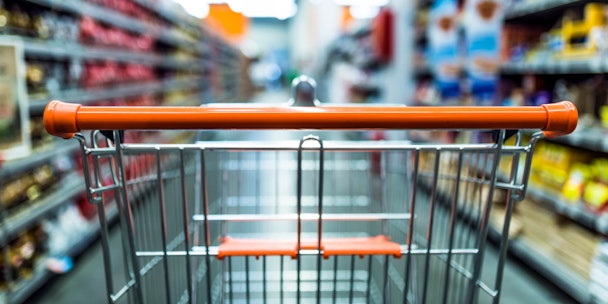Five ways supermarkets can reclaim their market share
The British grocery market has been characterised by constant disruption over the past decade, with the share of the cake being consumed by the big four - Tesco, Sainsbury's, Asda, and Morrisons - shrinking every year, including a five-year decline from 76% to 66%.

These established players face challenges on a series of fronts. Firstly, even within the traditional business model, new players like Aldi and Lidl have eaten market share with a cheaper, no-frills alternative.
Secondly, home delivery has transformed the market, with tech players like Amazon taking on the supermarkets and their very raison d’etre.
Finally, the likes of Riverford and Farm Drop have not only answered the growing demand for sustainability and provenance, but married it with the convenience of home delivery. These new direct-to-consumer businesses have further reduced traditional players’ basket sizes.
Against this backdrop, it's all too easy to fall into a defensive mindset and conclude that the days of the traditional supermarket are numbered. But that would be a mistake: there are several key brand and operational strengths supermarkets can leverage to fight back, both in store and online.
An unmatched history of customer data
One huge advantage supermarkets have is the vast history and record they already have with customers. While the internet was in its earliest days, supermarkets had already created loyalty cards to provide a tailored, data-led offering to customers. They now have rich insights going back 20-25 years.
Knowledge is power and although disrupters may be doing things differently, they are starting way behind the curve in understanding the market and potential triggers for behaviour.
The logistical mastery to win home delivery
Supermarkets are built on logistics, making them ideally suited for home delivery. They have the systems, processes, and scale to get produce wherever it needs to go quickly. But effective use of the data they already have will be the critical differentiator. The questions they need to ask themselves include:
- What are the real-time insights and updates consumers can benefit from?
- Many ask for feedback after the delivery, but how quickly is this then integrated into the process?
- If the customer is out, who should the driver deliver the shopping to?
- How can I use customer data to smartly select the right substitutes?
Long-established brand loyalty
The concept of brand loyalty has been under attack in recent years but it still counts as a USP for traditional supermarkets, especially given the series of reputational scandals afflicting newer digital players.
Customers aged 45+ are more likely to remain brand-loyal, have far more wealth, and are growing in number. For younger customers, brand loyalty is harder to win but supermarkets can leverage their wide product diversity to offer smart inducement for younger customers. A recent survey by Swift Prepaid solutions showed that 83% of generation Z would be more loyal to a brand that offered value added rewards and surprises.
Supermarkets have a golden opportunity to offer services or discounts based on a customer’s life stage. For example, for a younger customer who has recently moved out of the family home, supermarkets could offer homeware promotions to help furnish their flat. A tailored offering can help to win loyalty and give supermarkets a head-start against competitors.
Access to trusted suppliers
A key trend in the grocery market is the increased desire for provenance and sustainability. Supermarkets have large supply chains and long-standing relationships with farmers that should be emphasised in marketing. There are, however, perceived trust issues to be overcome.
A recent case saw a customer buying a chicken from Sainsbury's that was labelled for Aldi, raising concerns about how much meat is sourced from the same supplier. This was symptomatic of a wider issue: there is mistrust with meat and how it is produced. Growing numbers are also concerned with how animals are farmed. With consumers more driven by provenance, proving credentials will be key to winning trust.
Catering to local shoppers
Half of all online searches are now performed with local intent, and even queries without obvious local intent are usually answered with localised search results. Why? Because most searches are done on mobile phones, with the phone acting as our navigational tool as well as our information source. Google knows this and supermarkets should too. As national brands with local iterations, they are well placed to capitalise on the local-first nature of search engine behaviour.
Yet supermarkets are too wedded to central planning, with internal teams structured to focus on the overarching brand message but not the local iteration. How do you craft the right message for a customer in Warrington compared to Winchester? Optimising for local means meeting the distinct requirements of different regional audiences. For instance, recognising whether the prevalent call-to-action should drive someone to a store or home delivery. It’s not easy, but a localised approach can be transformational, unlocking the ability to execute hundreds of campaigns simultaneously, not just one.
Even when faced with market uncertainty and rising competition, traditional supermarkets still have brand and operational strengths their smaller rivals can only dream of. By focusing on these assets and embracing customer-centricity, supermarkets can start to fight back against the digital disrupters.
Content by The Drum Network member:

DAC
DAC is one of the largest independent digital media agencies in North America, with a growing international presence and offices in the US, Canada and Europe. We...
Find out more